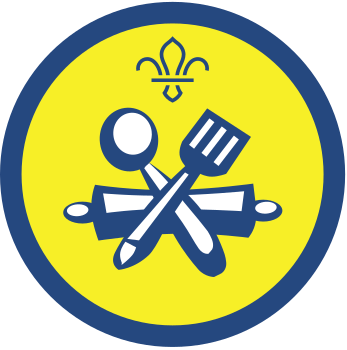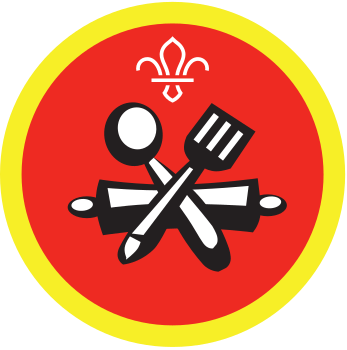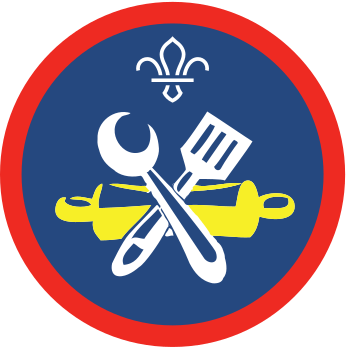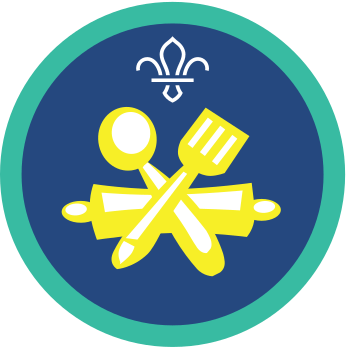
Culinary celebration creations
You’ll need
- Pens or pencils
- A4 paper
- Device with access to the internet
- Access to a kitchen and cooking equipment
- Ingredients for your dish
Before you begin
- Use the safety checklist to help you plan and risk assess your activity. Additional help to carry out your risk assessment, including examples can be found here. Don’t forget to make sure all young people and adults involved in the activity know how to take part safely.
- Make sure you’ll have enough adult helpers. You may need some parents and carers to help if you’re short on helpers.
Setting up this activity
- You could run this activity as a 'Bake off' style event, while you prepare for a party or other celebration with the final dishes being made for or judged at the event.
- You may want to run this activity over several weeks.
Using a kitchen and preparing to cook
- You could run our kitchen safety and hygiene activities, Kitchen risk bingo and Home kitchen hygiene prior to running this session.
- Remember to have a hand washing station and take extra hygiene precautions when handling raw meat, such as regular hand washing, having separate equipment for raw and cooked meat, and washing up equipment as soon as it's been used. Take a look at our guidance on food preparation.
- Make sure you have all the ingredients ready.
- Remember to check your ingredients against any allergy or dietary requirements to ensure everyone can enjoy the recipe. This may mean using alternative ingredients.
Having a safe cooking source
- Make sure that everyone’s fires have been built outdoors in clear, open areas, with plenty of ventilation, and away from any areas where people will be sleeping.
- All the fires need to burn down to hot embers before they can start cooking. This increases the chance of the fuel burning without enough oxygen present, increasing the risk of carbon monoxide exposure. We’ve more guidance on different cooking methods.
- If using a gas stove, make sure it’s on a stable heatproof surface and in a clear and open area, with plenty of ventilation.
Designing your dish
- Gather everyone in a circle. Tell everyone that at special events, such as at Eid or Christmas, special dishes can be made.
- Explain that everyone will need to work in small groups to research and design a dish to celebrate an upcoming event. They might design a lunchtime meal, a brilliant breakfast or a tasty dinner. Alternatively, they could make a cake, biscuits, a snack or a sandwich filling. The options are endless!
- Divide everyone into group of around four people.
- Give the groups 15 to 20 minutes to the research the food that might be used at the celebration, in the people celebrating's culture or that's from a certain country. You could do some research first and print out some information before the activity for everyone to look at, or people could use the internet during the session if you’d have access to it.
- They should then design the dish they want to make. They’ll need to work together and make sure everyone’s ideas are included.
- Once they’ve designed their dish, ask everyone to create a list of ingredients and equipment they’ll need to create the dish.
- Make sure you’ll have all the equipment that each group needs, then set a plan for who’s bringing the ingredients to the meeting.
Culinary creations
- Ask everyone to get into their groups. Everybody should have washed their hands before handling any food. Remind everyone to regular wash their hands while cooking.
- Make sure everyone has all their equipment and ingredients ready.
- Give everyone the time to make their dish. Make sure you have adult volunteers or young leaders around to help everyone who needs it.
- When all the dishes have been prepared, give each group the opportunity to present their dish to the whole group and give everyone the opportunity to try the dish if they would like too.
- After all the dishes have been tried, it’s time to clean up. Make use everyone gets involved and if there is any leftover food you could donate it to a local food bank.
Reflection
This activity gave everyone the opportunity to research, plan and make a dish to cook that would suit the celebration, while developing their cooking skills and working as a team.
How easy was it to find foods that could be used for this celebration? Was there anything you found which surprised you? You all had to decide as a team what dish to make. How did you all work together to make that decision?
As well as deciding the dish, you all worked together to cook the dish. How did you work as a team to make it? Did you all have certain tasks or did you all help with everything?
Finally, you got the opportunity to try what you made. How did it taste? Do you think the people celebrating would enjoy it? Would you do anything differently if you made the dish again?
Safety
All activities must be safely managed. You must complete a thorough risk assessment and take appropriate steps to reduce risk. Use the safety checklist to help you plan and risk assess your activity. Always get approval for the activity, and have suitable supervision and an InTouch process.
- Cooking
Teach young people how to use cooking equipment safely. Supervise them appropriately throughout. Make sure it’s safe to use and follow manufacturers’ guidelines for use.
- Fires and stoves
Make sure anyone using fires and stoves is doing so safely. Check that the equipment and area are suitable and have plenty of ventilation. Follow the gas safety guidance. Have a safe way to extinguish the fire in an emergency.
- Food
Remember to check for allergies, eating problems, fasting or dietary requirements and adjust the recipe as needed. Make sure you’ve suitable areas for storing and preparing food and avoid cross contamination of different foods. Take a look at our guidance on food safety and hygiene.
- Hot items and hot water
Kettles, cookers and microwave ovens produce a lot of heat by the very nature of them. Caution is needed when in contact with items that have been heated and young people should use them under adult supervision. Use on a suitable surface, protecting it if necessary. Never leave hot items unattended and make sure there’s a nearby first aid kit, with items to treat burns/scalds.
- Electrical equipment
Inspect cables for any damage before each use. A responsible adult should supervise people using equipment, and people should follow instructions on how to use them correctly and safely. They should be properly maintained and stored. Be extra cautious of trailing cables and water when using electric equipment.
You could run this activity over multiple meetings, depending on how many groups you have and what access you have to equipment. If you’re doing this, remember to plan carefully, so you know who’s cooking what and at which meeting. This’ll mean the correct ingredients are brought to the meeting at which they’re needed.
The dishes can be flexible to suit the needs of the young people. You can make the groups as small or as big as you want, too.
If anyone needs help or struggles with fine motor skills, give them the opportunity to work in pairs, with a young leader or an adult volunteer. Alternatively, swap out the items for something easier to handle.
Think about the space you’ll be in and the equipment you’re using in advance to make sure it’s accessible to everyone in the group. Make sure the equipment is laid out with enough space for everyone, including anyone using a mobility aid.
Anyone who struggles with reading can join a group with a more confident reader who’s happy to read the scenarios and facts out loud.
There are lots of different jobs that need doing when planning, making and cooking a dish. There’s a role for everyone, so encourage everyone to be involved in a way that works for them.
Remember to check for allergies or dietary requirements and adjust the recipe as needed.
If anyone doesn’t feel confident in cooking the food, they could help in other ways, such as setting a table, creating labels for the dishes or reading out the recipe.
All Scout activities should be inclusive and accessible.
The dishes you create can be served at any larger celebrations you might have. You could share your recipes with the local community, other groups or parents and carers. Why not design and make your own recipe book?
This activity gives the young people the opportunity to design and make their own dish. If anyone’s feeling confident about cooking a dish, they could create their own and bring the dish in to the meeting for everyone to try.




